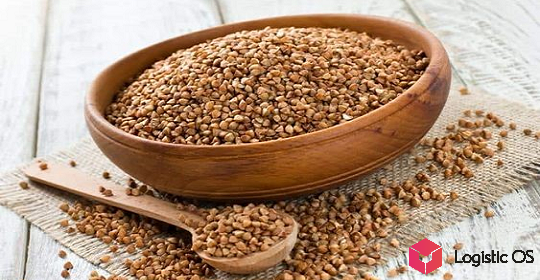Despite the rising price of this crop, climate change across the country could reduce production.
Over the past year, the cost of a ton of sunflower has increased from about $ 700 to $ 1,500, that is, doubled. Last but not least, due to the devaluation of the ruble, however, exporters make excellent profits by selling sunflower seeds abroad.
This is good … and bad. Because the passion for the production of this crop can harm farmers in the long term.
The main thing to know about a sunflower is that it consumes a lot of moisture, and is able to pump it out even from deep (more than a meter) soil layers.
According to the rules, a field can be sown with sunflowers only once every 7-8 years, the rest of the time other crops should grow there.
But the high price in foreign markets makes the farmers greedy and makes them plant a «sunny flower» for 2-3 years in a row.
As a result, the soil dries up almost completely, and there is no need to wait for a good harvest on this field for the next 3-5 years.
The climate is changing: the temperature is higher, the moisture is less!

Climate change is also a concern.
For example, Krasnodar Territory (one of the leaders in sunflower production) has faced a sharp decrease in soil moisture in recent years.
If compared with the average annual (normal) values, then:
In 2018 , precipitation was 26% less than usual.
IN 2019 — 6% less.
In 2020 — 45% less.
That is, the region is simply drying up, and the average annual temperature has increased by 10% from the norm.
Against this background, there is already talk of replacing sunflower with something less demanding on moisture and more resistant to drought. For example, flax or chickpea.
In 2020, in many fields of the Krasnodar Territory, the yield did not exceed 1.4 tons per hectare at a rate of 1.8. Where there was enough moisture, this figure was up to 3 tons. But in general, she is sorely lacking.
There are also problems in the Saratov region , where they also plant up to 1.4 million hectares of sunflower per year.
For example, in the winter of 2019-2020, there was no snow at all on the fields — and moisture, respectively. Therefore, there the question of the profitability of sunflower also faced the agrarians squarely.
The same is true for in Volgograd Region : having harvested a good harvest of sunflower and corn in 2019, producers rushed to sow more in 2020.
And they burned out: a severe drought (very typical for the region) canceled out the entire harvest.
As noted by an employee of the All-Russian Research Institute of Oilseeds named after V.S. Pustovoyta Alexander Bushnev, it is time for farmers to gradually learn not to “wait for the weather by the sea”, but to independently resolve the issue of moisture shortage and establish irrigation systems.
And also — in no way violate the rules of crop rotation .
No matter how much one would like to cultivate a sunflower annually, violation of the rules will eventually hit the farmer himself.

